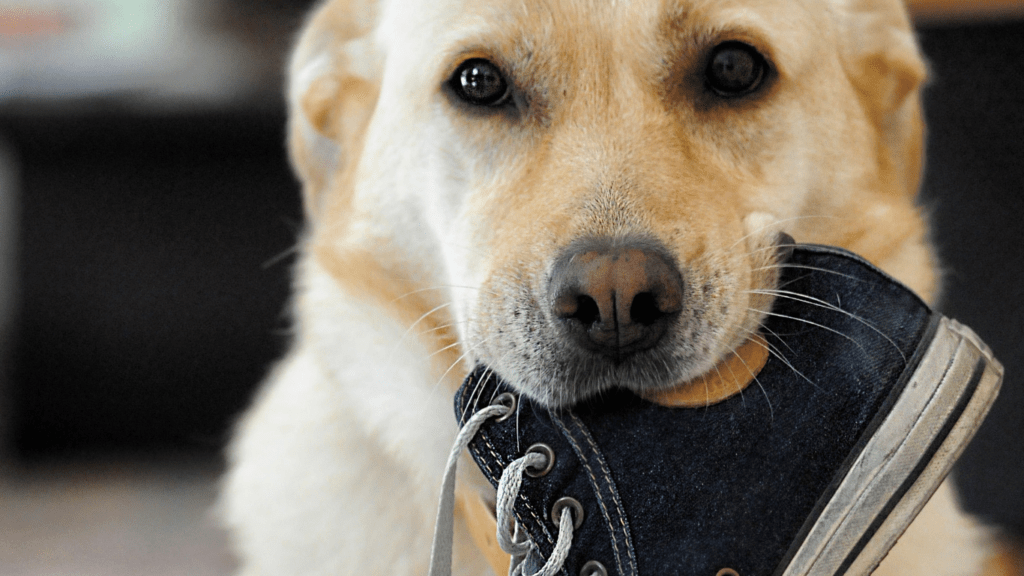Understanding Behavioral Issues in Dogs
-
Behavioral Issues Defined
Behavioral issues in dogs refer to actions or patterns that cause problems for the owner or the dog. These can include aggression, excessive barking, digging, chewing, and separation anxiety. Such behaviors may stem from a variety of sources, including genetic predisposition, lack of training, or environmental factors.
-
Main Causes of Behavioral Issues
Several primary factors contribute to behavioral issues in dogs. Firstly, genetics play a significant role. For example, herding breeds often display nipping behaviors due to their instinctual drives. Secondly, a lack of proper training can lead to dogs not understanding acceptable behavior. Finally, environmental factors, such as changes in the household or lack of socialization, can significantly impact a dog’s behavior.
-
Recognizing the Signs
It’s crucial to identify signs of behavioral issues early. Common signs include growling, barking, destructive chewing, and issues with house training. For instance, a dog that suddenly starts growling at familiar people may be experiencing stress or discomfort.
-
Impact on Owner and Pet
Behavioral issues can strain the relationship between a dog and its owner. Excessive barking can lead to complaints from neighbors, while destructive chewing can result in costly repairs. Thus, understanding and addressing these issues early is essential for maintaining a harmonious household.
-
Consulting a Professional
When dealing with persistent behavioral issues, consulting a professional dog trainer or a veterinarian can provide valuable insights and solutions. Professionals can identify underlying causes and recommend a tailored training plan or medical intervention if necessary. For example, a dog exhibiting severe anxiety might benefit from both training and medication.
Identifying Common Behavioral Problems
Dogs often manifest a variety of behavioral problems that can disrupt the household. Recognizing these issues early is crucial for effective intervention.
Aggression
Aggression includes growling, snapping, and biting. It can stem from fear, frustration, or territorial instincts. Identifying the trigger is key; often, it’s a response to perceived threats.
Excessive Barking
Excessive barking serves as a communication method but becomes problematic when constant. This issue can result from boredom, anxiety, or alertness. Identifying the context helps pinpoint the cause.
Chewing and Destructive Behavior
Chewing on furniture, shoes, or other household items usually indicates boredom or stress. Puppies, in particular, chew to alleviate teething discomfort. Providing appropriate toys can mitigate this behavior.
Separation Anxiety
Dogs with separation anxiety exhibit distress when left alone. Symptoms include howling, pacing, and destructive behavior. This stems from strong attachment to their owners and can be managed with gradual desensitization and positive reinforcement.
Root Causes of Behavioral Issues

Understanding the root causes of behavioral issues in dogs helps in addressing them effectively. Several factors contribute to disorders like:
- aggression,
- excessive barking
- chewing
Lack of Training
Training plays a critical role in a dog’s behavior. Without guidance, dogs may develop undesirable habits. Basic commands and obedience training teach dogs acceptable behavior and help in setting boundaries. For example, a dog that hasn’t learned the “leave it” command might chew on shoes or furniture.
Poor Socialization
Socialization is crucial for dogs’ development. Dogs not exposed to various environments, people, and other animals from a young age might become fearful or aggressive. This lack of exposure increases stress in new situations, leading to behavioral problems. For instance, a poorly socialized dog might bark excessively at strangers or other pets.
Physical and Mental Health
Health issues can significantly impact a dog’s behavior. Conditions like hypothyroidism or arthritis cause discomfort, leading to irritability or aggression.
Mental health is equally important; anxiety or depression can result in destructive behavior such as excessive chewing or digging. Regular veterinary check-ups help in early detection and treatment of such conditions.
Understanding these root causes provides a solid foundation for addressing and correcting behavioral issues in dogs.
Effective Training Techniques
Using effective training techniques helps address common behavioral issues in dogs. Training not only builds a strong bond but also creates a harmonious living environment.
Positive Reinforcement
Positive reinforcement involves rewarding dogs for good behavior. Rewards can include treats, toys, or praise. When dogs receive a reward immediately after performing a desired action, they are more likely to repeat that behavior.
For instance, if a dog sits on command and gets a treat, it’ll associate sitting with a positive outcome. According to the American Veterinary Society, consistent use of positive reinforcement enhances learning and reduces problem behaviors (source: AVSAB).
Consistency in Commands
Consistency in commands ensures dogs understand expectations. Every household member should use the same commands and gestures for specific behaviors.
For example, if “sit” is the command for sitting, everyone should use “sit” instead of alternative words like “down” or “sit-down”. Inconsistent commands confuse dogs, making it harder to learn desired behaviors. Studies show that consistent training improves obedience levels, thereby reducing behavioral issues (source: Humane Society).
Socialization Practices
Socialization practices expose dogs to various environments, people, and other animals. Proper socialization reduces fear and aggression. Begin socialization early, ideally between 3 to 14 weeks of age, but it’s never too late to start.
Take dogs to parks, pet-friendly stores, or arrange playdates with other dogs. Engage them in different activities to build confidence and comfort in various settings. Research indicates that well-socialized dogs exhibit fewer behavioral problems compared to poorly socialized ones (source: AKC).
Professional Help and Resources
Sometimes, professional assistance offers the best solutions for addressing behavioral issues in dogs. Below are options for professional help and resources.
Working with a Dog Trainer
Engaging a professional dog trainer can accelerate behavioral improvements. Trainers develop personalized plans to address specific issues like aggression and excessive barking.
These experts often implement proven methods such as positive reinforcement and behavioral adjustment training. For example, if a dog exhibits leash aggression, a trainer might use desensitization with controlled exposure to other dogs.
Veterinary Consultation
Behavioral problems may stem from underlying health issues. A veterinary consultation can rule out medical causes such as pain or neurological disorders.
Vets often provide insight into how health influences behavior and recommend behavioral specialists if needed. For instance, if excessive chewing persists, a vet might examine for dental problems or digestive issues.
Preventive Measures for Future Problems
Understanding and implementing preventive measures can significantly reduce the occurrence of behavioral issues in dogs. Key strategies focus on exercise and mental stimulation to keep dogs healthy and happy.
Regular Exercise
Regular physical activity is crucial for a dog’s well-being. Dogs need daily walks, playtime in the yard, or runs in the park. Specific breeds may require more intense activity; for instance, Border Collies and Siberian Huskies benefit from rigorous exercise due to their high energy levels. Consistent exercise helps release pent-up energy, reducing the likelihood of unwanted behaviors like excessive barking and chewing.
Mental Stimulation
Mental stimulation is just as important as physical exercise in preventing behavioral problems. Providing toys that challenge dogs’ minds keeps them engaged. Puzzle toys, treat-dispensing toys, and simple games like hide-and-seek offer mental challenges.
Training sessions that teach new commands and tricks also keep dogs mentally sharp. Ensuring dogs have a variety of mentally stimulating activities helps prevent boredom-related behaviors, such as digging and chewing.




